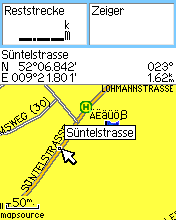This summer I drove through russia with osm maps in my Garmin (60Cx) which showed many ???'s. It was not nice. The maps were still very usable. Home again I decided to contribute to osm in such a way that next year the maps will contain transliterated placenames and roadnames. This not only my problem. There are several posts here were the ???'s are complained. My discussion started here: http://forum.openstreetmap.org/viewtopic.php?id=2625&p=13
A summary: The url http://api.openstreetmap.org/api/0.6/node/245888277 delivers following data.
If this -cyrillic- data is presented to mkgmap with a name tag list like --name-tag-list=name:en,int_name,name then the result would be ???'s in the 60Cx. For mkgmap you have to specify also a codepage I have read here… But even a cyrillic codepage would not be the solution as on that garmin you would see all kind of funny symbols then.
So a solution would be transliteration. (see my first link for what transliteration is).
If mkgmap would get the following data (same node with a name:en tag added) the troubles were over
So we decided to make a program (that now has the name translit) that could be part of the toolchain of Lambertus for weekly generating routable maps of the whole world. Translit would add on the fly such tags if necessary.
First tests have been done by Lambertus. I’m confident that it will work on his system too. Time to tell about translit.
To be continued…

